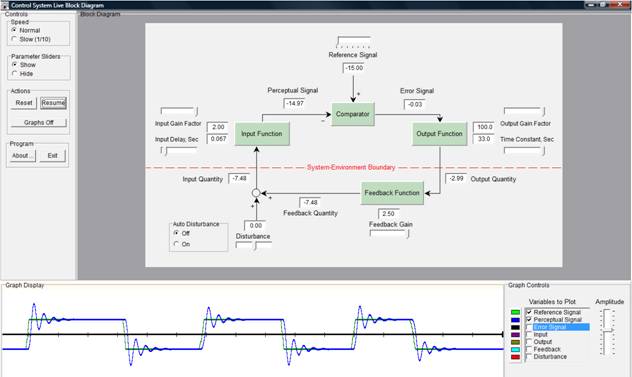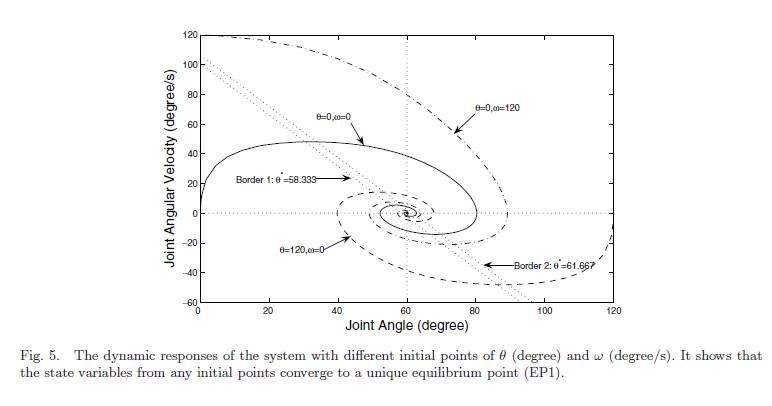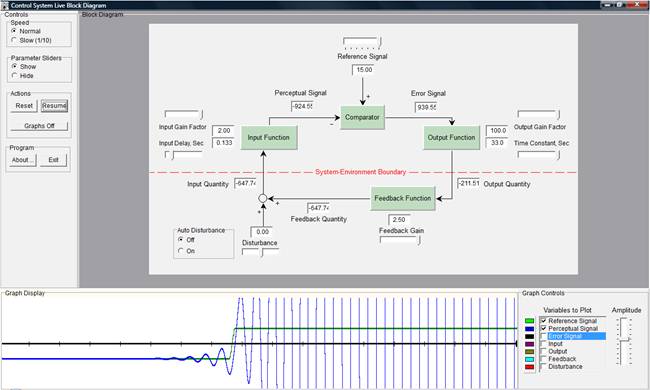(Gavin Ritz 2011.06.17.12.01NZT)
( Gavin
Ritz 2011.06.17.10.14NZT)
[From Bill Powers (2011.0.6.16.0925 MDT)]
Gavin Ritz 2011.06.16.18.04NZT
GR: I can only see it working like this if it is
to be consistent with your Control System. They way you have it below confuses
me because the feedback is severed, like that.

BP earlier: Note that still a higher level would be needed to control for
“understanding” on the part of the other person, which would be
perceived in many instances of (remembered) relationships between one’s own
sentences and the other person’s.
GR: Bill there is something that I still can’t understand you have
two arrows going into the input on person A and person B, and a separate arrow
for the feedback loop of each person. So the second arrow circumvents the
feedback loop. That is not consistent with your control system. Because you
can’t have two arrows going into the input only one and it must going
into the controlled variable for it be a control system. If you have another
input from somewhere else then that’s outside your feedback loop, that
breaks the integrity of the control system.
Below is the diagram from chapter 2 of LCS III. Note that the output of the
control system feeds back to affect the input quantity, which is also affected
by a disturbance. So the perceptual signal is affected by two inputs, one
caused by the system itself and the other caused by some independent variable
that we call the disturbance.
In general, the input quantity is a collection of environmental variables, not
just a single variable. There are really multiple inputs to the perceptual
input function (think of the retina of the eye with millions of sensory
receptors), and the disturbance could affect some of them while the action of
the system affects others. The sets of inputs may overlap partially,
completely, or not at all.

The input quantity corresponds to the “spoken sentences” in my posted
diagram. Note that what affects the other person is NOT the variable shown as
the output quantity. The output quantity is the set of actions that produce the
spoken sentences, not the sentences themselves. If we were looking at a
multi-level diagram, it would be clear that the output function for spoken
outputs operates through a feedback function made up of tongue, jaw, lips,
vocal cords, and diaphragm. What comes out of that feedback function affects
not only the input function of the speaker, but the input function of the
listener as well.
Representing higher-order control systems with a single diagram is difficult.
What is shown as the feedback function really includes multiple levels of
perceptual input functions and also output functions below the level being
diagrammed The so-called input quantity is really a hierarchy of perceptions at
levels below the one being diagrammed. And if we want to speak of
“sentences” being passed back and forth, we really have to imagine
that the lower-level systems in both speakers are organized identically. In
truth, all that is really passed back and forth are waves of air compression
affecting intensity-level perceptions in each person. It takes numerous levels
of perceptual processing to construct from those sound-waves the things we call
pitch and timbre, phonemes, morphemes, words, and finally sentences, meanings,
and relationships among meanings. There is no guarantee that these levels are
organized the same way in any two speakers. Communication is somewhat of a
miracle, even when the two speakers have similar degrees of skill in using the
same language.
Martin Taylor dealt with these problems in a somewhat different
way, but the same difficulties arise and require showing “virtual”
variables and pathways that represent higher-order levels of the two
hierarchies of control. Those virtual pathways don’t really exist; they assume
that the two speakers have similar internal organization, a simplification made
for obvious practical reasons, but in truth nothing passes between the speakers
but those raw sound waves.
See my
drawing below. The only model that looks consistent with your control system
looks like to me the hexagon, any other shape destroys the integrity of your control
system.
I’m trying to keep in mind your strict definitions of a control
system. So the basic shape of the control system must stay as per your diagram
in B:CP. Change that and its something else not a strict feedback system.
You loose the controlled variable in that diagram above???, they are
controlling the disturbance as per that drawing.

You are showing the CV as
a single variable, outside the input function, that provides a place for the
two effects on the input function to be added together. That’s OK, but remember
that it’s the input function which is defining the CV as some particular
function of a set of physical variables or lower-order perceptions. Inside the
circle where you wrote CV should really be a swarm of N environmental variables
called qi[n]. Different input functions can actually detect different CVs
within the same set of qi’s.
All I did with my diagram was to include the CV inside the input function,
showing just the two effects on it, the system’s own feedback effect and the
independent disturbing effect. Your way of diagramming it is just as good, but
it does raise the question of how spoken sentences can affect
something physical in the environment, when only sound waves are really there.
“Really”, that is, according to our physics models.
Okay were on the same page (thank you), I
see what you’ve done. In some emails ago I showed the controlled variable
as potentially being nested so it has n number of variables. My answer to your “how”
above is, imagine the hexagon (the environment) as a conduit going around and
around with inputs and take-offs from each control system (can be multiple).
So communication
and any physical phenomena are hexagons of relationships between control
systems.
This is sort of analogous to Conrad Lorenz’s Bernard cells, so there’s
real physical things going on, sound waves, light, and movement.
I guess I’m not going to elaborate
too much further because this is why I have argued about the concept of the
energy (in the environment) and in the organism. It’s like a matching
process. Basically we control physical forces inside us that are also external.
That’s why the control system makes sense to me.
For example when a teacher provides an
objective “that’s the disturbance” it has to be incorporated
within the individual who is a control system. So learning is a hexagonal process.
Inputs, takeoffs, blockages, spending up, slowing down, adding, taking away. etc.
That’s why I’m saying it’s
not that far fetched step to actually define all controlled variables. Disturbances
that’s a bit more difficult it could be anything, but generally not.
When I try to disturb somebody emotionally
all I’m really doing is trying to block their feedback system and I do
that by choosing any of my output variables I think may work. But in reality
one can never really do that because it’s not the environment that affects
an individual’s input, it’s themselves.
Regards
Gavin
Best,
Bill P.





